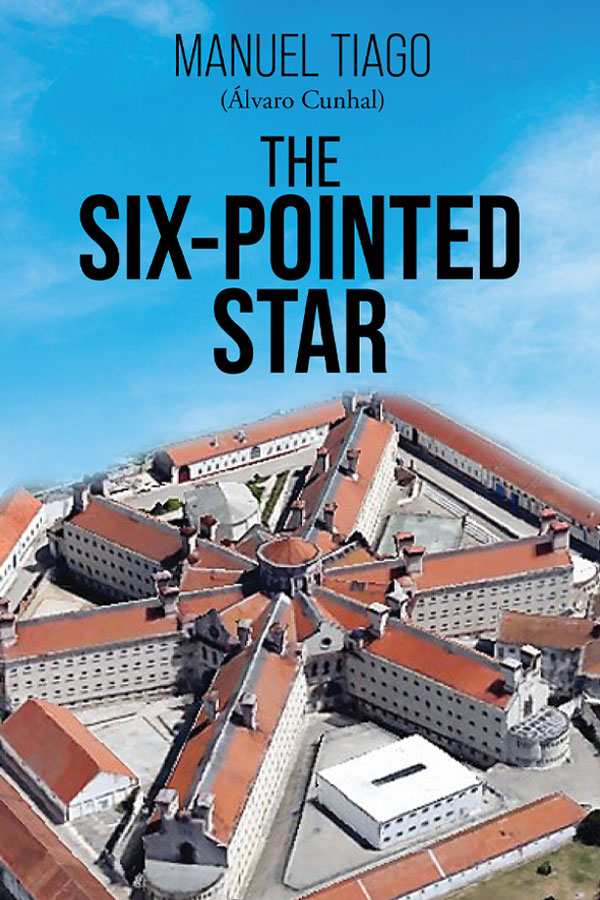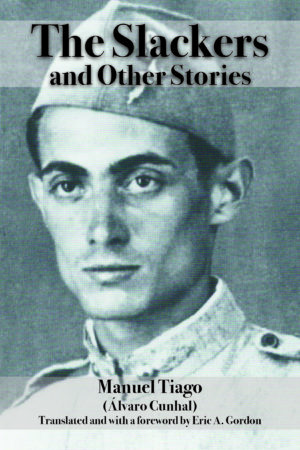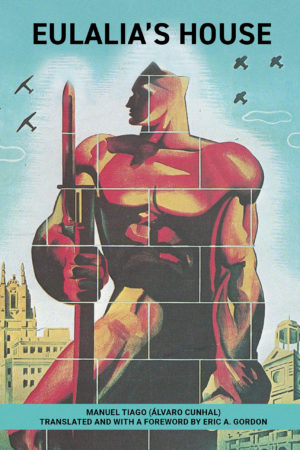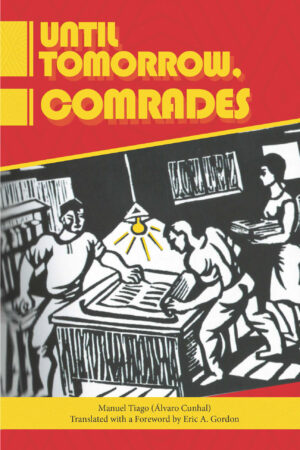Description
Manuel Tiago derived much of his material for this book about prison life from the years he spent in detention for his political views during the era of Portuguese fascism. There are three “political” prisoners in this novelistic mémoire, but mostly we meet men convicted for other types of crimes, many of them violent. But in a backward, repressive society, is stealing food for the poor or trying to demand justice for your fellow workers truly a crime?
Many writers have applied their gritty realism to the subject of prison, again, some from personal experience. The Six-Pointed Star, now available to an English-language readership, joins the select company of great books on this theme.
The author opens and closes his account on the outside of the prison. On almost every page, he tells stories, some tragic, some even with elements of humor, showing that life on the inside mirrors that on the outside. All the human qualities, both positive and negative, that we see there, we also see here.
In this composite tapestry of a place, a time, and a shifting population of 500 men, almost any reader will be able to identify moments in their own lives when they were just this far away from committing a crime, or wanting to, and ending up as these men did. However many reasons there may be why people commit crimes, even heinous ones, prison does not cancel a person’s humanity. That may be in itself the single most important “message” this book communicates.
Story in People’s World: https://www.peoplesworld.org/article/alvaro-cunhals-prison-novel-the-six-pointed-star-a-chat-with-the-translator/







Dennis Broe –
There are many calls today for abolishing the police or, in actuality, establishing a downsized police force and allowing social workers to respond to calls for help not with a badge and a gun but with an understanding of the problems that plague troubled and impoverished communities. The same can be said for prisons, where, especially in the U.S. with the largest incarcerated population in the world, large scale reforms are needed.
This social fact is driven home by the recent publication of the Portuguese author Manuel Tiago’s fictionalized version of his own prison experience in The Six-Pointed Star, in a first translation into English by Eric A. Gordon. This is the nickname given to Lisbon’s fortress-like carceral building with a surveillance centre and cells radiating out from it. During the Salazar dictatorship, which ran parallel to Franco’s rule in Spain, the fortress housed prisoners guilty of crimes large and small. As the book relates, some were violently antisocial while others were a cry against the dictatorship’s inequality. Alongside these were of course those most dangerous of inmates, those imprisoned, as are Mumia Abu Jamal and others in the U.S., for their political ideals. Not to mention two other prominent global political prisoners whose incarceration under harsh conditions is being used to push them slowly and quietly toward death: Wikileaks Julian Assange and Hotel Rwanda’s Paul Rusesabagina, a cancer survivor kidnapped and detained in a Rwandan prison.
The layout of the prison with its columns radiating out from a central point seems modeled after Jeremy Bentham’s panopticon, the structure that was able to survey its inhabitants at all times. Michel Foucault then took this layout as the model for modern surveillance outside jailhouse walls, which has through the digital universe further extended this perpetual prison in which we are all being watched, monitored, and disciplined.
Tiago, the pen name for the political activist Álvaro Cunhal, stresses the arbitrary nature of those locked in this system as the dictatorship reached its apogee in the 1950s. The author is struck, in getting to know the inmates, by the fact that the prison is filled with “killers who are neither worse nor better than one[s] who have never killed and never would,” adding, in terms of the unfairness of the system, that “many who committed crimes could well have spent their whole lives without doing them.”
This is a breathtaking novel of heartbreaking vignettes, aided by Gordon’s translation which respects the timeframe but updates the lingo at moments where this is crucial to an understanding by a contemporary audience.
The author suggests a strong contrast in the motives and circumstances of those locked up. Silvino, convicted of a number of robberies and break-ins, is recognized as “a good man” by guards and prisoners and is fascinated by his explorations into the animal kingdom. Augusto retaliates when a big landowner robbed his family, seduced his sister, and then threw them off their land. In anger at this injustice, he plugs the landowner at point blank range with a shotgun in a crime for which the prisoners forgive him. Garino, meanwhile, stole food, distributed it to his fellow villagers and for this was locked up for twelve years.
These crimes, the product of a ruthlessly unequal society, are differentiated from, for example, the doctor who drugged his patients and then raped them. Behind bars, he treats the other prisoners disdainfully as if he should not have been among them. Instead of showing actual remorse he makes a show and spectacle of prayer which he performs in front of guards and prison officials in a way that is designed to get him an early release. In this other group also is Argentino who trafficked in women and, in a fit, kills his partner with, in this case, “the crime revealing the kind of man he was in the end.”
The subject of prison labour, in the South in the U.S. practiced in a prison system after Reconstruction overwhelmingly filled with Black prisoners and a substitute for slavery, is described in the novel as a scam. The prisoners earn a pittance for the most taxing work while then having to use two-thirds of their earnings to pay the cost of their cells, their food, and, not just their clothes, but the washing of them as well.
A liberal warden begins his stint at the prison enacting reforms, including the prisoners finally being allowed to eat together instead of their only collective experience being one hour in the yard. One prisoner dryly remarks, “This won’t last long,” and indeed it doesn’t as after a slight provocation the reforms are withdrawn.
Tiago’s or Cunhal’s own experience is reflected in the novel in the character of a political prisoner, locked in solitary, whom the other prisoners take pity on, attempting to smuggle soap to his cell as a way of acknowledging his presence. Cunhal was elected head of the Communist Youth Brigade in the 1930s where his adventures included a visit to Moscow and two arrests. He was thrown into the Lisbon prison for good in 1949 and spent the first eight of his 11 years there in solitary. In 1960, after being transferred to a prison with less security, he escaped and rode out the dictatorship living in Moscow and Paris.
In 1975, after the fall of Salazar the year before, he was elected to the Constituent Assembly, while also carving out a career as a novelist, writer of short stories, artist, and translator, notably of King Lear. His funeral in 2005 was attended by a half million Portuguese.
Perhaps Cunhal’s most famous novel was A casa de Eulália (Eulalia’s House), on a Spanish Civil War theme, and his works were turned into Portuguese films and television series. The Six-Pointed Star is also a highly cinematic work recalling the Hollywood crime films of the 1940s. The story of a bandit in the hills which the prisoners follow and who is eventually gunned down by the police is eerily similar to Bogart’s doomed escaped con who falls in love with a blind woman in High Sierra.
The novel’s description of one prisoner’s body exiting the prison “wrapped in a topcoat of planks” recalls a moment in I Was a Fugitive From a Chain Gang where one of the inmates upon his release rides out from the chain gang institution on top of the coffin of a dead inmate.
The doctor, who assists the prisoners as best he can but is replaced by an incompetent one whose mantra no matter the illness is the do-nothing “This will pass,” recalls both the kindly doctor and the hardened replacement regime in that greatest of all prison films Brute Force.
There are prisoners who hang themselves after having all of their delusions broken, a stirring moment in the film which Cunhal describes in the novel. Others wither away. Such is the fate of Number 402 who made it over the walls but then collapsed in an injury that precipitated his slow decline. 402 describes the injustice of a system that has, like our own, foregone rehabilitation and is simply about a punitive exploitation: “I’m here for the rest of my life just on account of one second in my life.”
The desperation of these wasted lives who nevertheless make of this inhuman situation a kind of lively humanity is perhaps best summed up by the last line of Brute Force. The kindly doctor, as a post-mortem for prisoners mowed down in an escape attempt, says there is one thing that unites all of those in this situation. “Whoever they are, they’re gonna wanna get out.”
Eric Vogt –
“Write about what you know” is a well-known bit of advice given to those who aspire to become great writers. It is naïve to suppose that writers should become known in direct proportion to their greatness; however, this paradoxical status is occasionally remedied by an equally talented translator who can rescue them from what might have been a sepulcher of oblivion.
To this reviewer’s mind, both conditions have been met in Eric A. Gordon’s translation of The Six-Pointed Star, written by the Portuguese writer Álvaro Cunhal (1913-2005), who wrote under the pen name of Manuel Tiago, and recently issued by International Publishers. Edições Avante! first published the book in 1974 and, until he died, he never saw a single work of his fiction translated into English.
The novel takes place in a prison in Lisbon, known simply as A estrela de seis pontas, due to its architectural design, which became the title of the novel in Portuguese. Mr. Cunhal certainly had the “credentials” to write about what he knew of this prison. He was incarcerated there from 1949-1956 by the fascist regime of António de Oliveira Salazar, which lasted from 1932 to 1968 and for a few more years under his successors—and thus a contemporary of the fascist dictatorship of Francisco Franco in neighboring Spain (1939-1975). Few people in the U.S. are familiar with the fascist regimes in either country, but Portugal’s repressive government is even less well known, making Gordon’s project of translating Cunhal’s novels valuable windows into that dark corner of Europe. The first in the series was his translation of Five Days, Five Nights, also published by International Publishers (2020).
Prior to Cunhal’s incarceration of over seven years, during which he spent 14 months in solitary confinement, he had lived a clandestine existence for eight years because of his Communist Party affiliation. These conditions led to health problems that got him transferred to the infirmary of this infamous prison, where social conditions allowed him to get to know the prisoners who found fictional life in this novel. Just as important, his poor health got him transferred to another prison, the Fort of Peniche, from which, on Jan. 3, 1960, he and nine other comrades made an escape so bold and spectacular that, according to Gordon, it has gone down as one of the “most daring escapes in history of the world communist movement” (p. x). Despite his ill health, after the fall of the dictatorship in 1974, Cunhal recovered well enough to rise to occupy a long series of high-level positions in government and Party leadership until the year before he died. As testimony to his greatness in Portugal, over 500,000 people attended his funeral.
Looking at this novel from above, one sees that it is structured around a frame—two bookend scenes from outside the prison walls. In both, a young boy walking with his mother along a promenade asks what the impressive building is. Before the mother can attempt to answer, the narrator steps in and observes that from the outside, the massive structure could appear to be “the ancient castle of a great lord,” an explanation which would appeal to the imagination of a young boy, but is quick to note that certain architectural details contradict that fanciful impression: grated windows and a massiveness that “manifested a suspect grandiosity” (p. 3).
From that point, a third-person narrator who seems omniscient at times, takes the reader inside the prison, peeling back the symmetrical architecture of its six wings to the inside where, for just over 100 pages, readers come to know the prisoners until the other bookend scene, which returns to the promenade. The boy asks about the bars on the windows, to which his mother replies, “I don’t know, son…. Maybe because there’s a lot of treasures inside and they’re afraid thieves could break into the palace and steal them” (p. 105). Before the boy can ask another question, as boys seem to always do, “an electric tram rattled by” and the narrator tells us that the boy didn’t ask his question which was “just as well—because maybe the mother wouldn’t have known what to answer.”
The narrator also describes the prison in general terms at two points in the novel. At the beginning, shortly after the first scene with the boy and his mother, we read: “This is not the world that the passerby on the street out front could imagine, looking at the noble, fortified façade with towers of white stone hinting—beyond the walls topped by stately battlements—at cool parks and gardens” (p. 5). Much later on, there is a brief episode that mocks well-intended attempts to understand life on the inside. “A well-known author…asked the prison…to stay locked up in a cell for twenty-four hours.…” (p. 80). The author “wanted to have first-hand experience of how a man sentenced to fifteen years of maximum-security prison would feel” (p. 80). The mockery is rather obvious. The narrator concludes this episode thus: “It’s not known if the novel, once written and published, was ever sent to the prison library. Therefore, it’s not known if any prisoner had a chance to read it. It would be interesting to hear their opinions” (p. 81). This statement is reinforced in the final scene when the mother has no answer to offer her little boy because no one outside can know.
From early in the novel, the narrator privileges readers with a clear vision of what was going on in prisons during Salazar’s regime. If they have been paying attention, they come away with highly nuanced views of the so-called system of justice, of crime and of the circumstances and decisions that can turn ordinary people into criminals.
Between the two bookends, the narrator depicts life “on the inside” and dissects the characters of a sampling of the 500 incarcerated men. Readers come to know of their interactions and relationships with each other, themselves, guards, and how the circumstances of their lives and their own actions brought them there. The nuanced lesson repeated in many ways is that no two crimes are identical, nor are two criminals. It is valuable to read three of Cunhal’s observations about these topics, as related by the narrator. First, we read: “The word ‘homicide’ classifies the crime, but neither describes nor characterizes it. Different situations, different reasons, different motivations, different weapons” (p. 25). Further: “Every condemned man could be classified in judicial terms according to the crime committed…. but solely by the crime committed, no rigorous classification can be made of them as human beings. Classified in legal terms alone, the crime does not in and of itself define the man” (p. 31). Finally, we read: “There are killers who are neither worse nor better than many who never killed anyone and never would. There are others whose dark behavior surpasses the imaginable in a human being that in and of itself can only be explained by insanity” (p. 54).
The Six-Pointed Star can be grouped and compared favorably with other novels, play and films which are set in prisons. Several of these, and the most relevant, happen to be by Latin American writers. These include the autobiographical short novel El apando (1969), by the Mexican author José Revueltas (apando means a punishment chamber or cell). Another is the one-act, autobiographical play Círculo vicioso (1974) by the Mexican playwright José Agustín, a contemporary of Revueltas. Both of these authors are representatives of the ondero movement of the 1960s and both works are set in Lecumberri prison in Mexico City, infamous for incarcerating and torturing “left-leaning” political prisoners (and members of their families, including infants, while they were forced to look on).
The Six-Pointed Star can also be compared with another Latin American novel, El beso de la mujer araña (1976) by the Argentine writer Manuel Puig. Many readers will recall this as a Hollywood movie entitled The Kiss of the Spider Woman (1985), starring William Hurt, Raúl Julia and Sonia Braga. In addition to being set in a prison and involving a political prisoner, Valentín (played by Hurt), this work embeds serious examinations of homosexuality, as well as how governments exploit other prisoners to gather intelligence on those who are opposed to a current regime and who are imprisoned for that purpose. The issues of homosexuality are more closely examined in many footnotes in the novel, something that cannot be done so easily in a film.
Less related due to time, language, culture and motivation, are Papillon (1973), which is loosely connected to the real character of Henri Charrière, imprisoned on Devil’s Island; Midnight Express (1978), whose screenwriter was Oliver Stone; and even Alexandre Dumas’s The Count of Monte Cristo, recently in movie form in 2002. These works, like other American movies of the gangster genre, have little to nothing to do with political protest and are thrillers. By comparison, the Latin American works share a motive. They denounce the corruption on the “inside” by exposing prisons as a reflection of the corruption on the “outside.”
Cunhal’s artistic genius for depicting his characters in words is akin to the talent needed to paint a stunning and unforgettable vignette. This genius has been matched by Gordon’s adeptness as a translator: He has apprehended the subtleties depicted on the original canvas and transferred them to the English canvas without smudging the colors.
No doubt each reader will be attracted to, intrigued and repulsed by different characters, but for me, Silvino, Viseu and Garino stand out. Silvino because prison has not killed his fascination with the natural world; Viseu because he allowed himself to go to prison rather than his brother; and Garino because his story shows how hunger can drive a person to commit “crimes” which, if society were organized on a socialist model, would never have been necessary. Cunhal also had to select which, among the 500 prisoners, he would use as inspiration; yet after all these efforts, the narrator reports that there is really only one story: their collective predicament of incarceration, whether they will survive long enough to be released or leave in an overcoat made of planks.
There are also three Communist prisoners in this novel, held in C-Wing’s third balcony. One is transported out and never heard from again, and one dies from a hunger strike. The third remains out of sight but is a constant source of intrigue to the other prisoners. In fact, establishing contact with the Communist seemed to be an act of resistance which they welcomed, whether or not they were sympathetic to his politics. Some took up the challenge as an opportunity to exert their personal and collective agency in this supremely dehumanizing environment. The prisoner who dies from hunger is the only one whose inspiration can be identified with a real person: Militão Ribeiro, who, Gordon informs us, was arrested with Cunhal and who weighed only 37 kilos when he died on Jan. 2, 1950.
As I read and was introduced to one character after another, the way that Cunhal brings them to life led me to recollect how other authors have handled characterization. At the same time, I found myself needing to flip back and forth as different characters reemerged, interacting with others. This may be perceived by some readers as a weakness; however, I see it as a collection of vignettes that reveal related and intertwined lives. Readers will get a lot more out of this novel if they re-read it and take the trouble to put the pieces together.
The characterization techniques of authors of other works of literature came to mind, such as Chaucer in The Canterbury Tales (1392). Even though Cunhal doesn’t hand the narration over to the prisoners for a first-person treatment as Chaucer did, the uniqueness of each is shown to readers through their actions and some narrator interpretation; they are not merely described to readers. While Boccaccio’s Decameron (written in 1351, published in 1741) is also a framed tale, his group of seven women and three men are sheltering voluntarily outside Florence, Italy, to escape from the plague and they also tell their tales to entertain each other.
The third-person narrator in The Six-Pointed Star ironically but appropriately retains the imprisoned condition of the prisoners, yet also allowing them to speak for themselves in often piquant language as one might expect. As one who in real life did escape, Cunhal as narrator became the voice for many who remained and continues to be a voice for many who remain confined. This is poignantly true for those who are political prisoners who either never get out or who lack the ability or opportunity to tell their stories.
In the way he depicts characters, Cunhal is more similar to and contemporary with John Steinbeck, who created a ragtag group of single men, societal misfits because they are exemplary victims of the collateral damage of the Great Depression. Despite these circumstances, their humanity comes through, often in heartwarming ways, as they do favors for others when they are the ones most in need. Cunhal also allows a bit of light to pierce the thick mortar of the prison. Except for the very worst among the prisoners, their yet noble lives, with all their broken parts, are illuminated by showing their talents and often their awe at living things, such as is the case with Silvino. The author returns their individuality to them, as contrasted with the label of, for instance, “murderer,” “embezzler,” or even “rapist.” These moments of humanization are reminiscent of similar ones depicted in the lives of the admittedly less offensive inhabitants of the Palace Flophouse in Steinbeck’s Cannery Row (1945) and its sequel Sweet Thursday (1954).
The characters in all these works have been assembled in the same narrative space, willingly or not, by some external circumstance (i.e., the plague, a pilgrimage, the Great Depression or incarceration) where their characters can be revealed and examined by letting them tell their own tales, tell others’ tales, or having their tales told almost exclusively by a third-person narrator, as in The Six-Pointed Star. The comparisons with other artists can be summed up by the observation that the characters are alive and present for readers because of the talent the authors (and their able translators) had for just the right amount of detail in exposition, description and narration.
One other feature of this English publication is that Gordon has included discussion or study questions at the end. They are very useful for individual readers to “check their comprehension,” as the expression goes. Though they appear at the end, their function is brilliantly Brechtian: an attempt to ensure that Cunhal’s valuable messages and lessons are not lost on those who read for entertainment.
In an intriguing way, both Cunhal and Gordon have freed these men from their figurative confinement and given them lives more transcendent and potentially impactful than the fascist regime that physically locked up 500 men in real life. Comparing this novel with the treatment of dissidents, particularly Communists in the USA, one can easily find many political prisoners, falsely accused of “un-American activities” and even executed despite their innocence.
While some may say the days of the Red Scare are over, the rumblings from the Trump factions are reminders that they are not. Most of the time, dissidents in the USA are either ignored, ridiculed, slandered or denied having a voice, prevented from obtaining or retaining a job. How this may develop in the U.S., no one can say, but I am reminded of the case of the Chilean singer, and songwriter Víctor Jara (1932-1973). Aside from Pinochet, the names of his tormentors and executioners aren’t generally remembered, but Víctor Jara and his music are because he was a builder, not a destroyer. The same is true of Cunhal and the other artists who assert their voices to tell their stories and give voice to others. Gordon’s excellent translation has just expanded the Portuguese author’s audience to the whole English-speaking world.